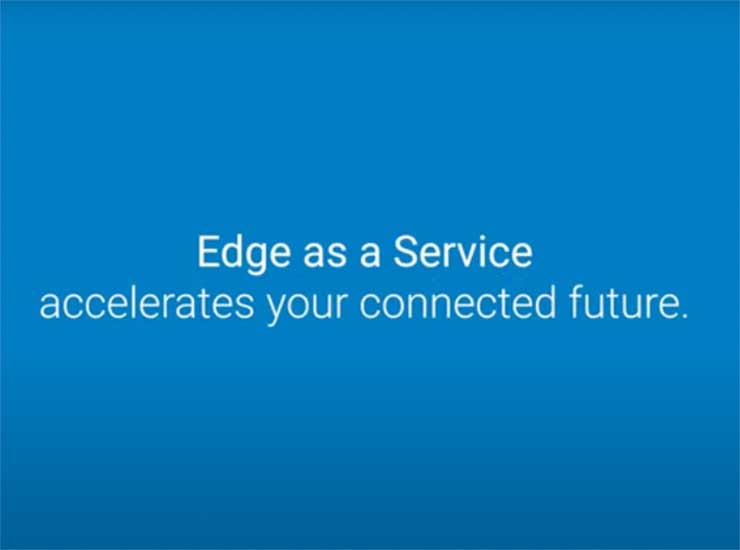-
Featured services
Think beyond the robots
The successful integration of AI and IoT in manufacturing will depend on effective change management, upskilling and rethinking business models.
Read the blog -
Services
View all services and productsLeverage our capabilities to accelerate your business transformation.
-
Services
Network Services
-
Services
Cloud
-
Services
Consulting
-
-
Services
Data and Artificial Intelligence
- AI and Intelligent Solutions
- Data/AI Strategy and Program
- Data Engineering and Platforms
- Data Governance and Management
- Data Visualization and Business Decision
- GenAI Consulting
- GenAI Platforms
- GenAI Industry Services
- GenAI Infrastructure Services
- GenAI Value Transformation
- View Data and Artificial Intelligence
-
Services
Technology Solutions
-
Services
Global Data Centers
-
Services
CX and Digital Products
-
Services
Application Services
-
Services
Sustainability Services
-
Services
Digital Workplace
-
Services
Business Process Services
-
Services
Generative AI
-
Services
Cybersecurity
-
Services
Enterprise Application Platforms

Accelerate outcomes with agentic AI
Optimize workflows and get results with NTT DATA's Smart AI AgentTM Ecosystem
Create your roadmap -
-
-
Insights
Recent Insights
-
The Future of Networking in 2025 and Beyond
-
Using the cloud to cut costs needs the right approach
When organizations focus on transformation, a move to the cloud can deliver cost savings – but they often need expert advice to help them along their journey
-
Make zero trust security work for your organization
Make zero trust security work for your organization across hybrid work environments.
-
-

Master your GenAI destiny
We’ll help you navigate the complexities and opportunities of GenAI.
Explore GenAI -
-
Master your GenAI destiny
We’ll help you navigate the complexities and opportunities of GenAI.
Explore GenAI -
Discover how we accelerate your business transformation
-
About us
CLIENT STORIES
-
Liantis
Over time, Liantis – an established HR company in Belgium – had built up data islands and isolated solutions as part of their legacy system.
-
Randstad
We ensured that Randstad’s migration to Genesys Cloud CX had no impact on availability, ensuring an exceptional user experience for clients and talent.
-
-
CLIENT STORIES
-
Liantis
Over time, Liantis – an established HR company in Belgium – had built up data islands and isolated solutions as part of their legacy system.
-
Randstad
We ensured that Randstad’s migration to Genesys Cloud CX had no impact on availability, ensuring an exceptional user experience for clients and talent.
-

Everest Group PEAK Matrix® Assessment
NTT DATA is a Leader and Star Performer in the Everest Group Sustainability Enablement Technology Services PEAK Matrix® Assessment 2024.
Get the Everest report -
- Careers
Topics in this article
In a world where data is increasingly powerful, knowing how to securely store and use the huge volume of information collected from IoT devices is critical. In most instances, this data has to be handled in real time or it simply isn’t useful. But this is not possible if the data first has to be uploaded to the cloud, processed and sent back. Instead, it should be processed close to the edge of the network, where it’s generated.
To do this successfully, you need secure infrastructure with ultralow latency and ultrahigh bandwidth capabilities. If you’re dealing with legacy applications and infrastructure and a small, local data center presence, processing data fast enough for actionable insights is problematic.
As we move toward AI and machine learning as the power behind automation and enabling smoother operations, organizations across various industries are seeing the benefit of using IoT and edge computing to enhance their capabilities and service delivery.
However, edge computing comes with its own set of challenges. The infrastructure can be challenging to deploy and manage in hyperscale environments, for one.
This is where edge as a service comes in.
What is edge as a service?
With edge as a service, you can use leading private networks (like private 5G), IoT and edge computing to connect people to data in real time, giving them meaningful insights that they can act on.
Edge as a service brings together reliable, powerful networks, edge devices and computing, and secure data transfer and storage. It’s a cloud-based service that provides edge computing resources on demand, so organizations can deploy and manage edge infrastructure without having to worry about the underlying hardware and software – and the associated costs and complexity.
Topics in this article
Watch the video: NTT’s Edge as a Service – expanding what’s possible
Challenges that edge computing can address
The ideal for any business is for the right person (or device) to have the right information at the right time. The “right time” usually means “right now” – and, for this, you need the right infrastructure.
Near-real-time automation requires highly reliable connections and ultralow latency. Edge computing reduces latency by processing data closer to where it's generated, resulting in faster response times and improved performance. To ensure low latency, edge computing infrastructure should be close to IoT and edge devices.
Security and privacy can be compromised by data leaving the organization’s perimeter. Edge computing enables you to keep data locally, on-premises, providing extra security. In addition, private 5G enables connectivity locally, providing secure access to on-premises devices.
For use cases with large data-bandwidth requirements, storage in the cloud is expensive. Because edge computing keeps data sources and their storage physically close to each other on-premises, it helps to increase security and decrease cost. It not only transmits data using a fast, reliable network that can handle large volumes but also reduces the amount of data that needs to be transmitted over the network, which can result in lower bandwidth use and reduced costs.
Edge computing can also improve security by keeping data closer to the source and reducing the attack surface area.
Private networks: a transformed 5G experience
In addition to being ultrareliable and highly secure, private 5G offers the benefit of low latency. It enables the speed, security, agility and total control that organizations need across every aspect of the network – design, build, integration, management and optimization.
A customized private network that delivers security, control and speed, with global coverage, private 5G helps you overcome the challenge of poor Wi-Fi connectivity in certain locations and gives you greater control over network deployment and data security. It’s an enabler for new applications, devices and sensors, and a big boost in managing ever-increasing data volumes.
From airports to manufacturing, organizations are rushing to enable their cloud and digital transformation journeys by using private 5G. Through network slicing and multiaccess edge computing (MEC), they can tailor their networks to meet device requirements.
Private networks also provide a foundation for private, public and hybrid cloud, enabling the cloud- and edge-based big data analytics behind asset management, condition monitoring, predictive maintenance and other automation.
The main benefits of private 5G can be summarized as:
- High performance: The network is tied to a specific area and offers fast connection speeds, low latency and interference-free, guaranteed performance.
- Network security and control: It’s a completely private network that can be expanded or reduced as necessary, keeping network traffic on-site.
- Cost savings, freeing up budget: A cellular network is easier to deploy than a cabled network and complements Wi-Fi.
- Mobility: In industrial environments, private 5G offers precise control over how applications use the network and, as you move around, devices can switch seamlessly between different parts of the network without losing connection.
Edge computing: secure and efficient data processing
Edge computing moves data processing and storage closer to where data is produced, enabling real-time benefits and supporting mission-critical applications and operations. It can drive security, efficiency and performance gains on-premises.
Drivers for edge to cloud:
- Performance: There’s a need to process large volumes of data at the center and edge while maintaining high performance and low latency.
- Governance: Observability, compliance, integration and shadow-IT control become critical as new requirements increase digital footprints.
- Security: Distributed digital platforms are more exposed. Securing infrastructure, applications and data is essential, especially for operational technology (OT) and while in transit.
- Complexity: Delivering the right capabilities at the right place on the edge-to-cloud continuum is complex and creates a need for reusable architectures.
- Talent: All these complexities need to be managed by experts who are in high demand in a market where supply is low.
IoT: a holistic solution for sustainability
Without the right data, private 5G and edge computing won’t deliver actionable insights at the right time. IoT is essential to digitalizing the physical environment. The IoT devices depend on the use case you want to develop for your industry.
For example, a sustainable building might have IoT devices such as optical gauge readers (to measure temperature, airflow and pressure), water-leak sensors, sensors to detect if doors are open or closed, indoor ambience monitors and carbon-dioxide sensors.
Analyzing the data from these devices enables you to automate operations such as switching lights on and off – saving energy – and create alerts for water leaks, spikes in energy use or other abnormalities. This increases safety and reduces waste in the short term, while data from IoT devices also supports informed planning and decision-making in the long term.
The intended use of an environment does not always match its actual use. Monitoring conditions over time reveals patterns that make it possible to benchmark and troubleshoot. For example, a meeting room might have low occupancy despite having the same equipment as other rooms. Once this pattern is investigated using data, the reason might be as simple as the room receiving too much sun in the late afternoon, pushing the temperature up higher than expected.
Once you start looking into use cases, the possibilities are endless. Combining private 5G, edge computing and data from IoT helps digitalize new use cases and capture new information while allowing organizations to take unprecedented action.
The beauty of edge as a service lies in new possibilities
Having a secure, wireless network to connect IoT and edge computing is allowing innovative new use cases, and we’ve only started to explore the possibilities.
Making ‘you had to be there’ digital
How do you convey the excitement of a race or any sporting event where the participants move further and faster than the viewers? If you attend a race, being there in person will only give you glimpses of the action. You don’t want to be a spectator; you want to feel like a participant. Edge as a service can transmit the video footage from a device attached to a racer’s bike and provide information on speed and location in real time. So, you can be in the middle of the action without being there.
Saving more lives and improving health outcomes
Sometimes, the difference between mostly recovering and the worst-case scenario is how soon treatment starts. This is especially true for heart attacks and strokes, where every minute matters. Connecting paramedics to specialists and sharing clinical information through sensors can allow specialists to start treating patients while they’re on the way to the hospital, drastically improving health outcomes.
- ALSO READ → 5G connects Hôpitaux Robert Schuman to patients for better and faster diagnosis and treatment
What edge as a service offers
Edge as a service enables real-time connection, drives automation and makes real-time decisions and responses possible – all without having to manage the infrastructure needed to build new use cases yourself.
Edge as a service allows organizations to scale their edge computing infrastructure up or down as needed, without having to worry about hardware procurement or deployment. It can also be more cost-effective than deploying your own edge infrastructure, as you only pay for the resources you use.
Because edge-as-a-service providers handle the deployment and management of edge infrastructure, you can experiment with edge computing and develop new use cases without having to worry about the underlying infrastructure.
Get in touch with NTT’s Edge as a Service team to see how we can help your organization with our intelligent technology solutions.


